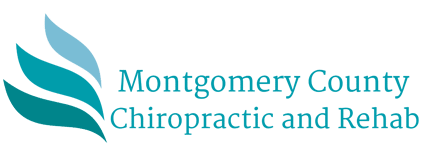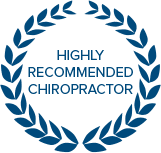Chiropractic Services in Bethesda MD
What is Chiropractic?
Chiropractic is the third largest doctored profession in the world, and the largest of the Complimentary Medicines. Doctors of Chiropractic have well over 5000 hours of clinical training in anatomy, physiology, pathology, diagnosis, radiology and nutrition, including clinical internship.
Chiropractic physicians treat conditions of the musculoskeletal system without the use of drugs or surgery. The musculoskeletal system includes muscles, bones, joints, ligaments, nerves and fascia, or just about anything that makes your body move and work properly.
While Chiropractic is usually thought of as a treatment for pain, pain is just a symptoms of dysfunction. A chiropractor’s goal is to find and fix the root cause of the pain (Muscle spasm, Trigger points, Reduced Flexibility, altered joint mobility, weakness, etc). Because pain is just one of the many symptoms that accompany dysfunction, it is often not present at the onset of a particular issue.
Initial symptoms usually include stiffness, mild soreness, or loss of flexibility. Only later on does pain become present as the condition progresses.
What is a Subluxation?
When a chiropractor feels up and down your spine, they are checking for what is termed a “subluxation”. A subluxation is defined as altered movement, malposition or degenerative changes of one or more vertebral segments. This may have a negative effect on the neurologic systems, muscular, and other soft tissue structures such as vertebral discs, tendons, ligaments and blood supply.
Because subluxations cause nerve pressure and interference, it can negatively affect anything that the nerves go to. Only 10% of spinal nerves sense pain. 45% go to muscles and 45% go to internal organs.
What is a Chiropractic Adjustment?
A Chiropractic Adjustment is a type of therapy that chiropractors use to re-align or restore motion to a joint that has shifted out of place, or become fixated (stuck) in one position. When these joints shift or get stuck, it causes muscle tightness and nerve irritation which in turn causes pain. By adjusting these joints, we are able to restore proper motion and relieve the symptoms that are associated with the joint being out of place.
In addition to relieving pain, chiropractic adjustments reduce muscle tension and improve nerve function. This means improved function in anything that the nerves travel to. Some examples are improved immune function, digestive health, reproductive function and reduction in high blood pressure.
There are many different types of adjusting techniques to fit different types of patients and conditions. The adjustments can be made by hand, or utilizing handheld or mechanical devices.
What can the patient expect to feel?
Our patients often experience a sense of relief as their muscles relax and tension is released. The adjustment is rarely painful except for occasional soreness (like after a heavy workout), that usually lasts less than 24 hours.
How long does treatment take?
Each patient and condition is handled on a case by case basis, so there is no one set period of time that treatment will take. Surprisingly level of pain doesn’t always correlate with how much treatment is needed. An example is a patient coming in with mild neck and upper back pain, but they have significant postural issues and arthritis in the neck. Because our focus is on maximizing function, the pain might be gone long before we have reached a period of maximum correction.
On the other hand someone coming in from a car accident in significant pain may only need a few weeks of treatment before being released from care.
The Two Phases of Care
Patients will typically undergo 2 phases of care: Active Care and Maintenance Care. Active care will be for a short period of time, usually 6-12 weeks, but the patient will come in more frequently during that time. Anywhere from 1-3 times per week.
The goal of active care is to reduce muscle tension, increase flexibility, build strength, and mobilize/realign the spine. Frequency and repetition are important because after adjustments are made to correct misalignments, muscles will slowly pull them back out of place. With each subsequent adjustment, and as we strengthen the supporting muscles, the joints will stay in place for longer and longer periods, until we reach a point of maximum correction.
Once maximum correction has been made, the active care program ends. At this point, the joints are now in alignment, but they aren’t yet stable in their position. This is when the maintenance care plan begins. The visits become much less frequent, but last for larger amounts of time. Typically once to twice per month for anywhere from 6-12 months. The purpose of the maintenance phase is to “maintain” the correction and prevent the joints from shifting out of position again.
A good analogy is someone who goes to the orthodontist to get braces on their teeth. The purpose of the braces is to straighten teeth that have become misaligned, similar to the misalignments in the spine. Once the teeth have been straightened, the braces come off. This would be the same as the end of the active care part of the treatment.
After the braces come off, even though the teeth are straight, they aren’t yet stable. This is why a retainer must be worn for several years after the braces come off, to keep them from shifting back out of place. This is the same as the maintenance care part of the treatment.
Does a patient need to be in pain to need treatment?
The simple answer to this question is no. As stated before, pain is just one of the many symptoms of dysfunction and isn’t necessarily present even when a problem exists. As a rule, absence of pain doesn’t mean absence of a problem.
Using another dental analogy, would you wait until your teeth are in pain before going to see a dentist? The obvious answer is no. Everybody knows that you should see the dentist twice a year to check for problems before they become painful. This is called prevention.
Chiropractic care is also preventative in nature. The only difference is that your spine is significantly more important than your teeth. It houses the nerves that make everything in your body work. By correcting misalignments before they become painful, we are able to prevent conditions from forming in the first place, and slow the progression of conditions already present. An example is arthritis, which is your body’s response to instability, usually caused by injury or weakness. By improving mobility and strength, we can stop the progression that arthritic changes normally take.
Whether you are seeking relief from pain or simply would like to add chiropractic into a comprehensive wellness program, it all starts with a complete functional exam. The clinicians at Montgomery County Chiropractic are expertly trained in identifying musculoskeletal problems and determining proper courses of care. To schedule your initial visit and see if you are a good candidate for chiropractic care, call (301) 907-6533.
| OFFICE HOURS |
| Monday | 10:00am - 8:00pm |
| Tuesday | Closed |
| Wednesday | 10:00am - 8:00pm |
| Thursday | 10:00am - 8:00pm |
| Friday | 11:00am - 5:00pm |
| Saturday | Closed |
| Sunday | Closed |

Montgomery County Chiropractic
6931 Arlington Road T200
Bethesda, MD 20814
(301) 907-6533



